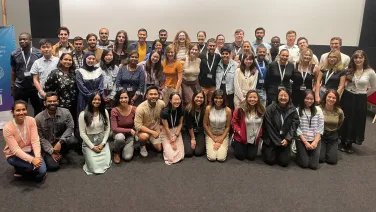
The Enders Group - Models of Human Primary Immunodeficiencies
The main focus of the lab is to investigate novel pathways regulating B cell development and function.
Research themes
About
The Ramaciotti Immunization Genomics Laboratory was established in 2008 through a Major Initiative Award from the Clive and Vera Ramaciotti Foundation to Associate Professor Anselm Enders and Professor Chris Goodnow. By analysing mice after random ENU mutagenesis we aim to elucidate new genes and mechanisms controlling the development and function of the immune system.
Since then, the main focus of the lab has been the investigation of novel pathways regulating B cell development and function. This work has lead to the discovery of many strains of mice with a defect in either the development or function of B cells and other lymphocytes subsets. Detailed analysis of these mice has led to the discovery of functions for previously uncharacterized genes or to the description of specific and previously unknown functions to otherwise well-studied genes.
Key outcomes from this approach were the discovery that flipping of phospholipids across the cell membrane is essential for normal development of B cells in the bone marrow (Yabas et al, Nature Immunology 12:441-449, 2011) and an essential role for the intramembrane endopeptidase SPPL2A for survival and function of mature B cells and CD8- dendritic cells (Bergmann et al, The Journal of experimental medicine 210:31-40, 2013).
As part of the Centre for Personalized Immunology (CPI), an NHMRC funded Center for Research Excellence, my group is investigating the pathogenesis of novel primary immunodeficiencies. In cooperation with clinicians and researchers from Australia and Germany, we are sequencing the genome from patients with unexplained primary immunodeficiencies. This work has led to the discovery of likely causal mutations in genes not previously associated with immune defects. To follow up on these mutations we are now generating matching mouse models and will analyze these to better understand the disease pathogenesis in the patients.












